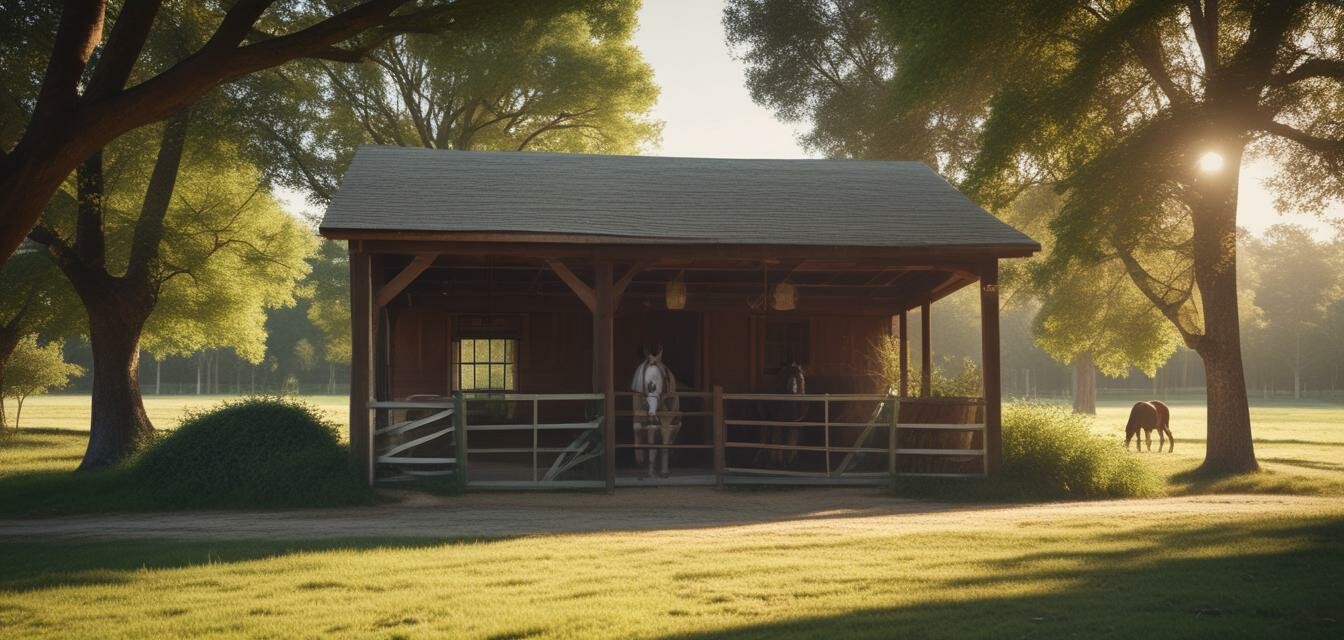
Creating a Calm Environment for Your Horse
- Understanding equine behavior can help in creating a calming atmosphere.
- Elements like bedding, lighting, and sound can impact your horse’s mood.
- Routine and consistency are essential for reducing anxiety in horses.
- Consider incorporating natural surroundings to enhance relaxation.
Creating a calm environment for your horse is essential for promoting relaxation and ensuring a secure atmosphere both in and out of the stable. Horses are sensitive creatures, and their surroundings significantly affect their mood and behavior. In this article, we will explore various techniques for setting up a tranquil environment for your horse.
Why a calm environment matters
A calm environment can make a significant difference in your horse's overall well-being. Horses that feel secure are more relaxed, which can lead to improved performance and a better bonding experience between horse and rider. By understanding what makes your horse comfortable, you can help minimize stress factors in their surroundings.
Key elements to consider
Here are several key elements to consider when creating a calm environment for your horse:
| Element | Impact on Horses |
|---|---|
| Bedding | Comfortable bedding can prevent stress and discomfort. |
| Lighting | Soft, natural light is less harsh and more relaxing. |
| Sound | Soft, soothing sounds can comfort horses, while loud noises can frighten them. |
| Space | Ample space allows for movement, reducing feelings of confinement. |
| Social Interaction | Companionship with other horses can alleviate loneliness and stress. |
Techniques for creating a tranquil environment
Here are several techniques you can implement to create a peaceful atmosphere for your horse:
1. Choose the right bedding
Selecting soft and comfortable bedding is crucial for your horse's comfort. Options like straw or wood shavings can provide support and insulation from the cold surfaces.
2. Control the lighting
Ensure that your stable is well-lit with natural light during the day while using soft lighting at night. Avoid bright, artificial lights that can be jarring or cause unnecessary stress.
3. Manage noise levels
Keeping the stable calm and quiet is essential. Avoid loud noises, and consider playing soft music to create a serene environment.
4. Provide adequate space
Ensure that your horse has enough space to move around freely, as confinement can lead to stress. Stalls should be spacious enough for horses to lie down comfortably.
5. Facilitate social interaction
Horses are social animals. Ensure your horse has the opportunity to interact with other horses, whether through shared paddocks or nearby stalls, to foster a sense of community.
Tips for maintenance
Maintenance tips for a calming environment
- Regularly clean and maintain stables to prevent the buildup of waste and odors.
- Inspect and replace bedding as needed to ensure comfort.
- Monitor noise levels and surroundings to identify potential stressors.
- Rotate horses to different paddocks to provide new environments.
Understanding your horse’s behavior
Being observant of your horse’s behavior will further help you create a calm environment. Look for signs of stress or discomfort, such as:
- Nervousness or restlessness
- Excessive neighing or whinnying
- Being easily startled or spooked
- Changes in eating or drinking habits
Conclusion
Creating a calm environment for your horse is achievable through careful consideration of their needs. By focusing on the elements of bedding, space, lighting, sound, and social interaction, you can foster a safe and peaceful atmosphere for your horse. Understanding equine behavior and maintaining the environment will not only benefit your horse but also enhance your riding experience. For further insights on horse care and supplies, check out our section on Horse care products.
Pros
- Improved relaxation for your horse
- Greater overall well-being and performance
- Enhanced bonding between rider and horse
Cons
- Initial setup can require time and effort
- Ongoing maintenance is necessary
Explore more about horse riding
If you're interested in further enhancing your horse riding knowledge, consider exploring our Buying Guides or News and Trends for the latest updates and tips.
